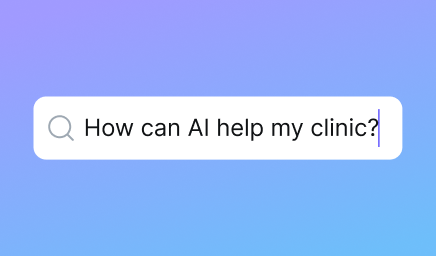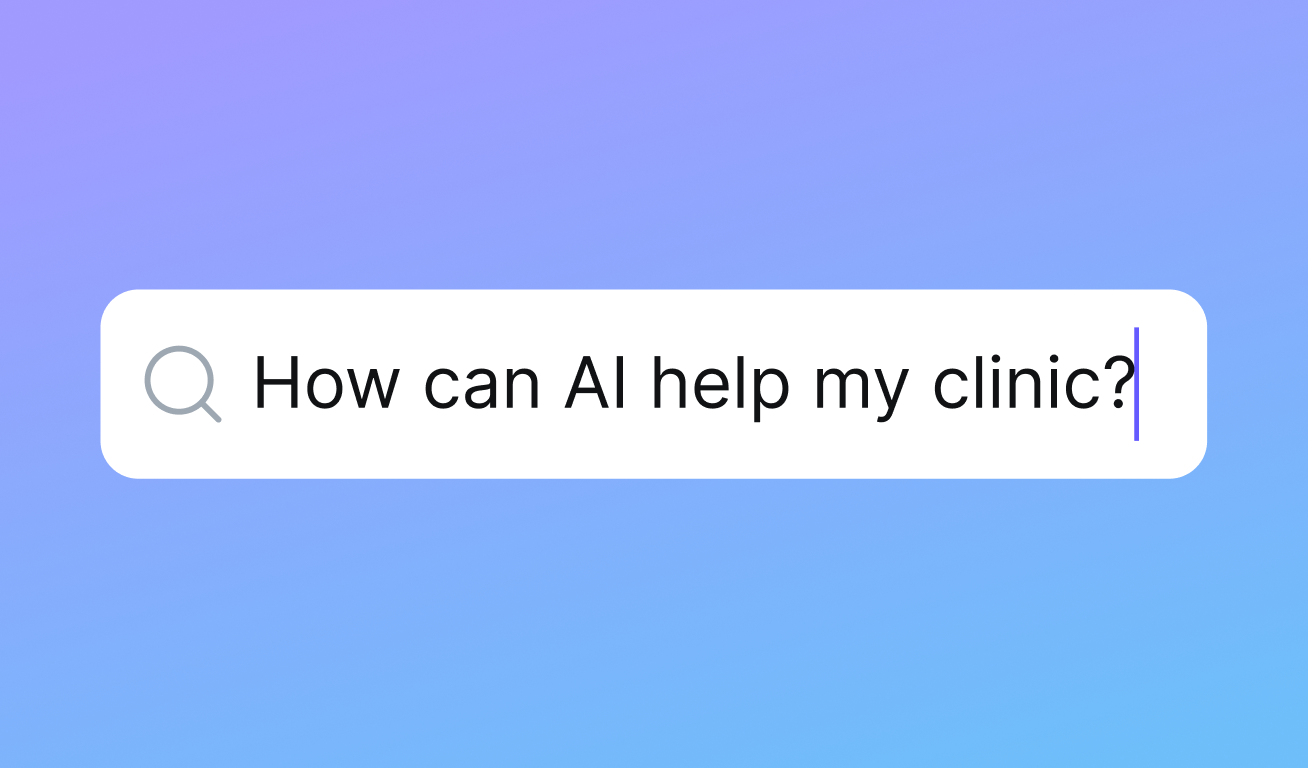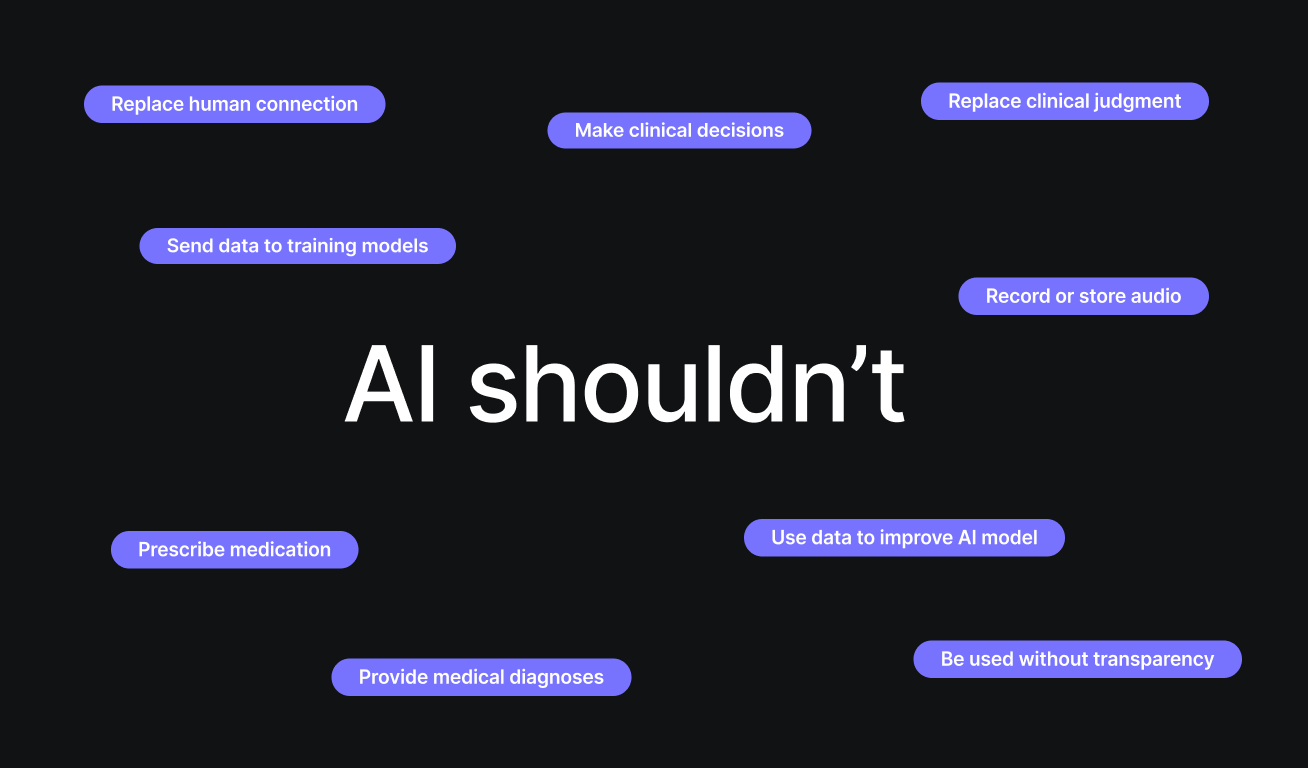
Back to articles
How AI is revolutionising clinical software in Aesthetic and Telehealth clinics


The new clinical advantage
Artificial intelligence isn’t just disrupting clinical tech - it’s reshaping the standard of excellence in modern care. In aesthetic and Telehealth clinics, AI is helping clinicians document faster, stay compliant, and deliver more personalised care. As patient expectations rise, regulatory pressure grows, and administrative work piles up, those who adopt clinical automation tools and compliance-ready AI aren’t just keeping up, they’re gaining a powerful competitive edge.
Why AI documentation matters now
AI is already woven into daily life, from banking apps, to voice assistants. Now, its documentation tools are transforming how aesthetic clinics and telehealth practices operate:
- Drafting patient notes using ambient listening.
- Uncovering trends from complex data.
- Automating follow-ups and personalised aftercare.
- Easing cognitive load for clinicians.
Far from being a gimmick, AI offers a genuine clinical advantage, especially when applied thoughtfully and responsibly.
For example, clinics using ambient listening can auto-generate notes during consultations, offering consistent and accurate records while clinicians focus on the person in front of them.
Game-changing use cases of clinical automation tools
Ambient listening for structured notes
With clear consent, clinicians can lean on on AI to capture tone, context, and key social cues during consultations, generating instant, compliant clinical notes. This approach supports structured documentation, reduces the burden of manual note-taking, and feeds directly into personalised aftercare. The result is more consistent notes, stronger patient relationships, and far less time spent on admin.
“It’s about scaling relationship-led care, not replacing it.”
Luke Fuller
Data insights without guesswork
AI tools for clinics can automatically identify scheduling bottlenecks, peak treatments or documentation gaps. Clinics get actionable intelligence, and clinicians can focus on care rather than spreadsheets.
Workflow automation with personalised after-care
From drafting patient notes to triggering follow-up reminders, AI steps in to automate repetitive tasks. For example, an AI system can detect missing clinical information or clinical variations and send clinicians suggested next steps, all while ensuring compliance and quality and without sacrificing the human touch.
Responsible practice: key principles for clinics using AI
As AI moves deeper into healthcare, the margin for error narrows and the need for ethical, compliant use grows sharper. In aesthetic and medical practices, where patient safety, privacy and professionalism are non-negotiable, responsible AI is essential.
What Does “Responsible AI” Actually Mean?
It means building AI systems that are:
- Safe: They don’t put patients at risk.
- Transparent: You understand how decisions are made and can explain them.
- Compliant: They operate within local regulatory frameworks (e.g. APHRA, TGA, Privacy Act).
- Human-centred: They enhance clinician judgement, not override it.
When adopting compliance-ready AI software, clinics should prioritise:
- Inference-only AI: that processes data without storing it permanently, protecting patient privacy.
- Secure, local infrastructure: keeping patient records and all data within Australia and behind secure firewalls.
- Transparent policies that explain how AI is used, stored and audited.
- Human oversight: ensuring clinicians review any recommendations before action.
- Built-in guardrails: such as real-time alerts, audit trails and role-based access to safeguard patient safety.
This approach means the software is not simply smart—it also prioritises patient privacy and regulatory compliance from the ground up.

Final thoughts
AI documentation for clinicians is no longer a theoretical option - it’s a practical, powerful tool transforming how aesthetic and telehealth clinics operate. With compliance readiness and automation at its core, it helps clinics:
- Save time on admin without sacrificing clinical detail
- Amplify patient safety and personalised experiences
- Build a future-proof, efficient and compliant clinical environment
If you would like to see how clinical automation tools or compliance-ready AI software can transform your clinic, let’s talk about how DappleOS brings it all together.
Expert insights straight to your inbox.
By subscribing you agree to our Privacy Policy.



